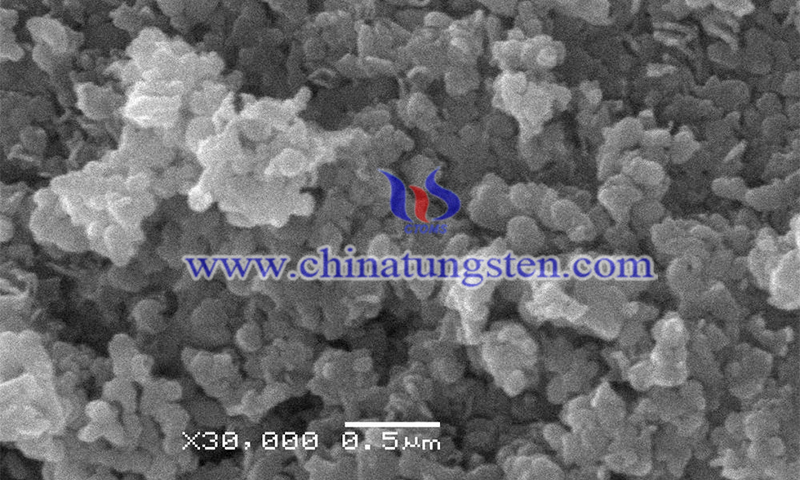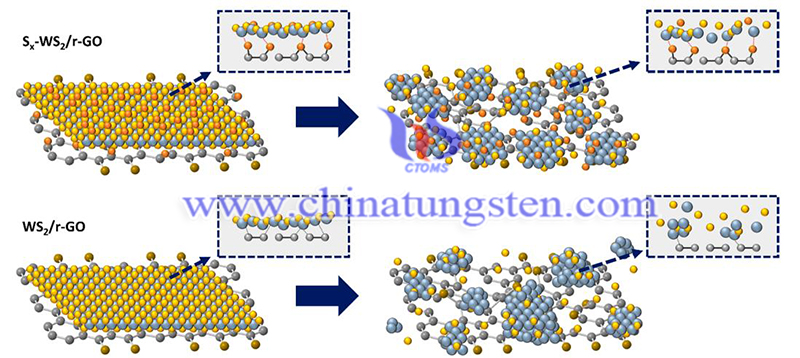Challenges of Current Applications on WS2 Nanomaterials
- Details
- Category: Tungsten Information
- Published on Monday, 05 September 2022 22:55
The current applications on WS2 nanomaterials still face challenges and should be investigated in depth in the following aspects. Firstly, the study mechanism of HER needs to be deepened and clarified in terms of the fundamental properties of WS2. Advanced characterization methods, such as in situ techniques, can be combined to analyze the structural changes of the material during the catalytic process and reveal the catalytic process of WS2-based nanomaterials, especially electrocatalysis.
In addition, theoretical calculations based on density generalized theory have received much attention regarding the electronic band structure of WS2, while experimental data based on spectroscopy should be obtained for a more comprehensive and detailed investigation to verify the reliability of the theoretical calculations.

(Picture source: ssnano.com)
Secondly, considering the modification of Tungsten disulfide nanomaterials, more research should be conducted. Specifically, the current research on the regulation of WS2 crystalline phases needs to be deepened, such as the study of growth mechanisms to obtain various controlled synthesis methods for WS2 nanomaterials with different crystalline phases. In addition, relatively few 3D nanodynamic WS2 have been reported compared to fullerenes and nanotubular WS2.
The properties and applications of pattern-like WS2 are of potential research value due to the highly exposed active site of pattern-like WS2. In addition, more candidate materials besides carbon materials can be considered to combine with WS2 to form hybrid structures. In particular, there is a lot of work that can be invested in considering the combination of the three aforementioned modifications to optimize the electrical and optical properties of WS2.
Thirdly, in terms of the preparation process, most of the current preparation methods are limited to the laboratory. For large-scale production, WS2 nanomaterials still need improved methods to be fabricated. Two strategies can be recommended: one is to simplify the preparation process, and the other is to find suitable raw materials to reduce the cost. Many efforts should be made in order to build a bridge between academic research and large-scale applications.
Fourthly, for the application of energy conversion and storage devices, other devices than those mentioned in this paper may be promising. For example, some literature has reported that WS2-based nanomaterials have good thermoelectric properties and can be used in thermoelectric generators. However, reports of applications in this area are relatively limited compared to energy devices and need to be studied in depth by researchers. sun et al. believe that with the in-depth study of these issues, WS2 nanomaterials are expected to have broader application prospects in the field of energy storage and conversion.

(Picture source: Uijin Chang/ ACS Appl. Mater. Interfaces)
Article Source: Sun, CB., Zhong, YW., Fu, WJ. et al. Tungsten disulfide nanomaterials for energy conversion and storage. Tungsten 2, 109–133 (2020).
- Tungsten Manufacturer & Supplier, Chinatungsten Online: www.chinatungsten.com
- Tungsten News & Prices of China Tungsten Industry Association: www.ctia.com.cn
- Molybdenum News & Price: news.molybdenum.com.cn
- Tel.: 86 592 5129696; Fax: 86 592 5129797; Email: sales@chinatungsten.com



 sales@chinatungsten.com
sales@chinatungsten.com